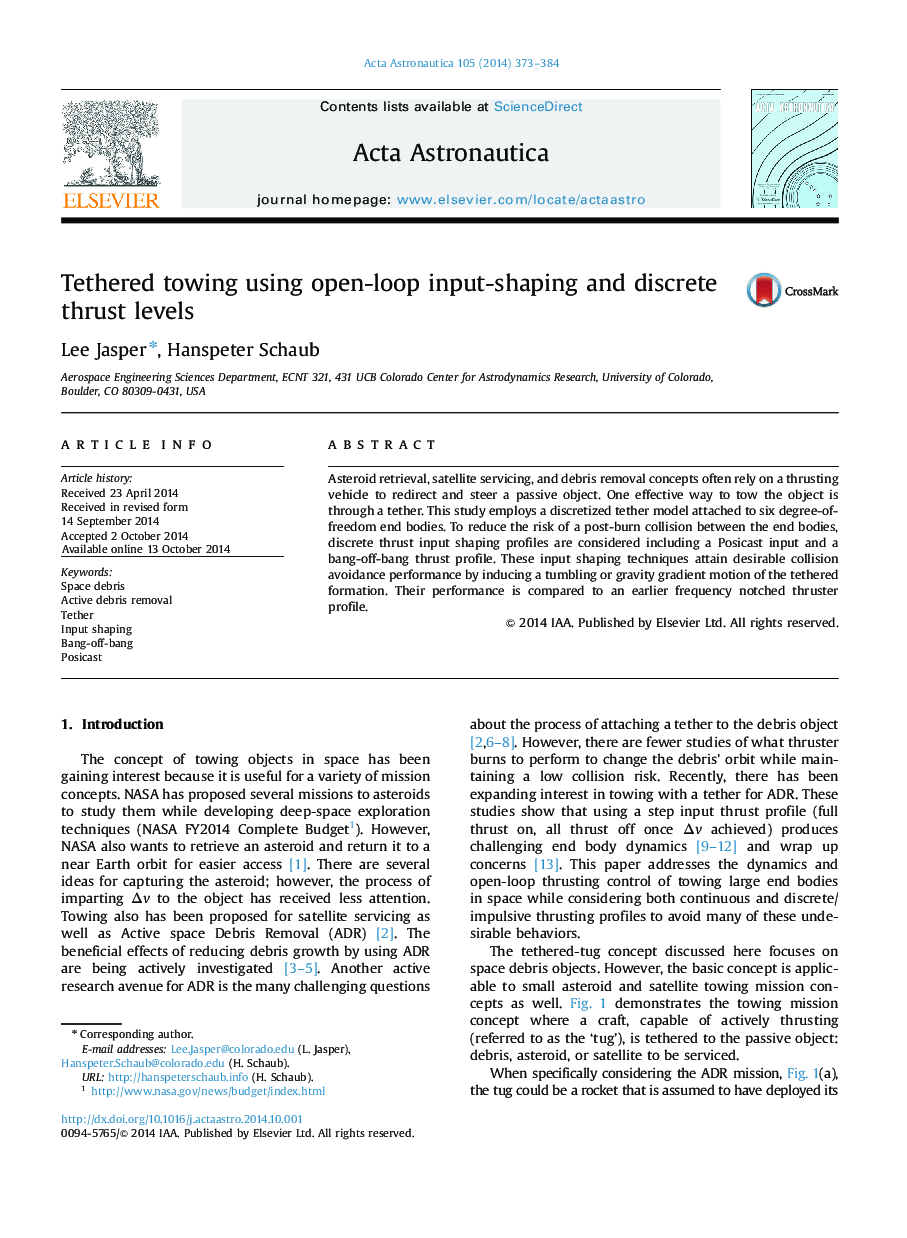| کد مقاله | کد نشریه | سال انتشار | مقاله انگلیسی | نسخه تمام متن |
|---|---|---|---|---|
| 1714531 | 1013328 | 2014 | 12 صفحه PDF | دانلود رایگان |

• An ADR method uses excess fuel on an upper stage rocket to tether and deorbit debris.
• An input shaped thrust maneuver reduces the post-burn motion.
• Two discrete input shaping profiles are explored: Posicast and bang-off-bang.
• Deep space input shaping reduces relative end body motion.
• On-orbit, large end body separations are achieved, avoiding collisions.
Asteroid retrieval, satellite servicing, and debris removal concepts often rely on a thrusting vehicle to redirect and steer a passive object. One effective way to tow the object is through a tether. This study employs a discretized tether model attached to six degree-of-freedom end bodies. To reduce the risk of a post-burn collision between the end bodies, discrete thrust input shaping profiles are considered including a Posicast input and a bang-off-bang thrust profile. These input shaping techniques attain desirable collision avoidance performance by inducing a tumbling or gravity gradient motion of the tethered formation. Their performance is compared to an earlier frequency notched thruster profile.
Journal: Acta Astronautica - Volume 105, Issue 1, December 2014, Pages 373–384